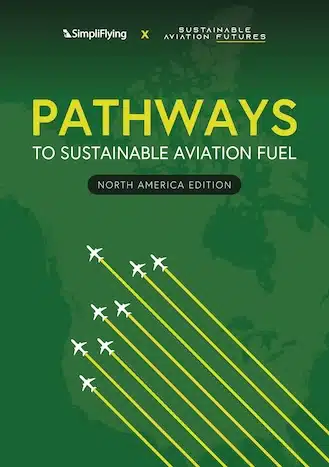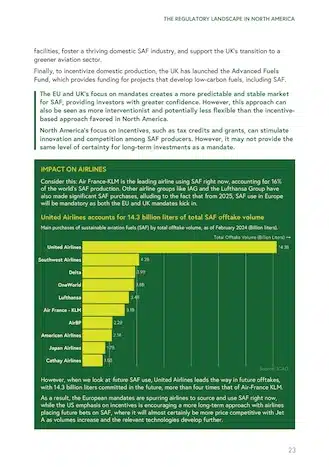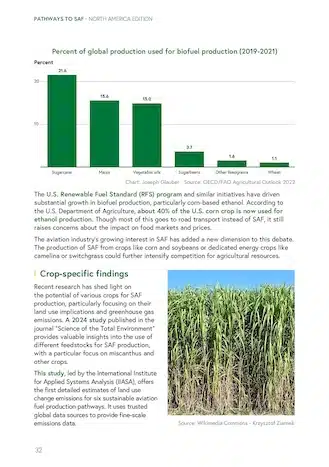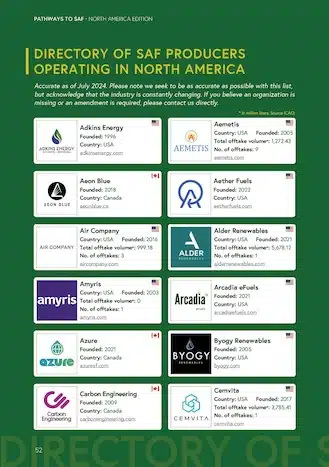REPORT
Pathways to Sustainable Aviation Fuel
(North America Edition)
Pathways to Sustainable Aviation Fuel(North America Edition)
Our report highlights the key opportunities and challenges for North America’s rapidly growing SAF industry.
North America’s leadership in the SAF race
As the aviation industry looks towards its 2050 net-zero target, North America, particularly the United States, has emerged as the undisputed leader in Sustainable Aviation Fuel (SAF) production.
As recently as 2021, a staggering 80% of the global SAF supply originated from a single US state: California. While other regions are gaining ground, projections for 2030 indicate that the US will maintain its dominance, producing nearly as much SAF as the rest of the world combined.
The US government’s ambitious SAF Grand Challenge aims for an annual production of 3 billion gallons by 2030, while Canada is implementing mandatory SAF blending requirements through its Clean Fuel Regulations.
Major airlines like United, Delta, and Air Canada have also made significant investments and commitments. This has helped spur substantial investments in new alternative fuel companies, which could lead to a proliferation of new production facilities across the continent.
In conjunction with the upcoming Sustainable Aviation Futures North America Congress in Houston, scheduled from 2 to 4 October 2024, we have prepared this comprehensive report to outline critical opportunities and challenges in the SAF industry.





Why SAF needs to do the heavy- lifting in order for aviation to reach net-zero
The need for a drop-in fuel compatible with today’s technology
In 2022, approximately 23,000 active commercial aircraft were in service worldwide, with over 7,000 in North America alone. Since commercial airliners have a 20-30-year lifespan, many aircraft delivered today will still be flying in 2050.
Battery and hydrogen are long-term, not medium-term solutions
While electric and hydrogen aircraft show promise, they face significant challenges in the medium term. Battery energy density limitations constrain electric flight, and hydrogen entails challenges regarding storage, infrastructure, and modifying aircraft fuel tanks.
The majority of hydrogen production is directed towards e-fuels
Even aviation hydrogen production itself is geared towards SAF. IATA predicts that by 2050, the aviation industry will require 120 million tonnes of clean hydrogen annually. Of this, 100 million tonnes (83%) will be used for SAF production

